Instruction
Failure is crucial: Make your practice sessions more difficult
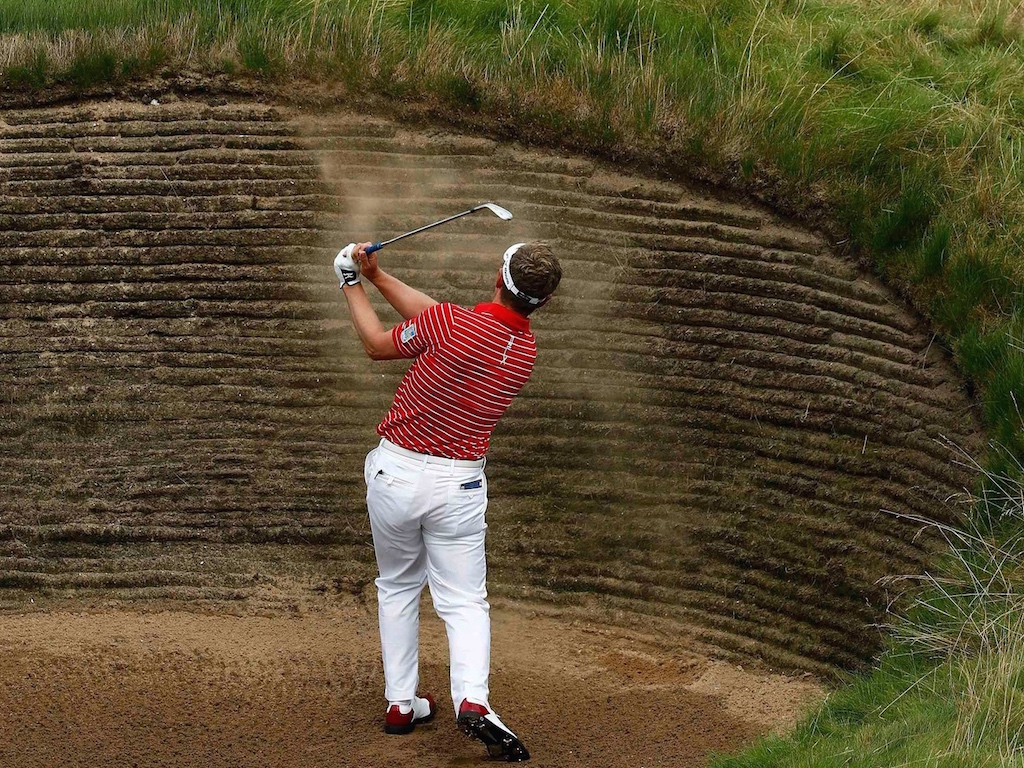
I recently attended the PGA Teaching and Coaching summit, a biennial gathering of the leaders in our industry. I enjoy interacting with and learning from other teachers and researchers in the game — the more I learn, the better I teach.
Dr. Mark Guadagnoli, a professor at several leading universities over the past 20 years, gave a particularly interesting presentation. His research into human performance and learning is enlightening and beneficial to improving at anything we do, but particularly golf, his specialty.
I will offer a capsule version of what Dr. Guadagnoli believes and invite those of you interested to read further into his work.
In practice, FAILURE IS CRUCIAL! We can benefit from practice when stress and failure are an integral part of what we’re doing. Real learning takes place under stress. This little tidbit fascinated me in particular because, as an instructor, I have witnessed it first hand for years.
When practice is too easy, we get bored — our brains fall asleep! Our training has no lasting effect if it doesn’t keep us awake.
Dr. Guadagnoli even quantifies it to say that practice should really contain no more than a 60-to-70 percent success rates. This means that we derive more value from practice when we fail 30-to-40 percent of the time than when we’re successful a majority of the time. Failure is the key; it is when we are stimulated enough to pay attention.
How can this translate to your game? There are a number of ways I suggest my students practice to help them achieve lasting success and take it to the course:
- Create difficult, golf course-like situations in your practice.
- Hit balls from a variety of lies: level, unlevel, good lies, bad lies etc.
- Work on what your game needs. If you are driving it well but can’t hit from the turf, hit a lot of irons. Practice the shots you hate the most.
- Practice those slippery, downhill right-to-left breaking putts (if you’re left-handed, practice left-to-right breakers).
- If you prefer a fade, force yourself to hit some draws to a back-left pin.
- Practice on the course. Go out to the toughest driving hole at your course and hit a bunch of tee shots.
If you fight a shank, drop a bucket of balls by the green in random lies. Resist the urge to “set them up.” Simply play them as they lie.
The idea is to make practice difficult so you’re prepared for anything. Place yourself under the toughest conditions when practicing so that play feels easier and less stressful, no matter the situation.
I watch members practice all day long from perfect lies, usually off the FRONT of a divot they’ve just made! You’ll almost never get this lie on a golf course, so giving yourself this lie on the range creates a false sense of improvement when working on your game.
As I said, Dr. Guadagnoli’s theories have an empirical basis in fact based on my own teaching and observations. Mike Hebron has gone to great lengths in his work to explain that any meaningful, sustained progress is the result of self discovery. Difficult practice under more stressful conditions is yet another way of expressing this. Practice has to include failure and we must learn from the failure.
“The secret is in the dirt,” so let’s get digging.
If you’d like me to analyze your swing, go to my Facebook page or contact me ([email protected]) about my online swing analysis program.
- LIKE151
- LEGIT43
- WOW7
- LOL1
- IDHT3
- FLOP3
- OB0
- SHANK11
Instruction
Clement: Laid-off or perfect fade? Across-the-line or perfect draw?

Some call the image on the left laid off, but if you are hitting a fade, this could be a perfect backswing for it! Same for across the line for a draw! Stop racking your brain with perceived mistakes and simply match backswing to shot shape!
- LIKE0
- LEGIT0
- WOW0
- LOL0
- IDHT0
- FLOP0
- OB0
- SHANK1
Instruction
The Wedge Guy: The easiest-to-learn golf basic
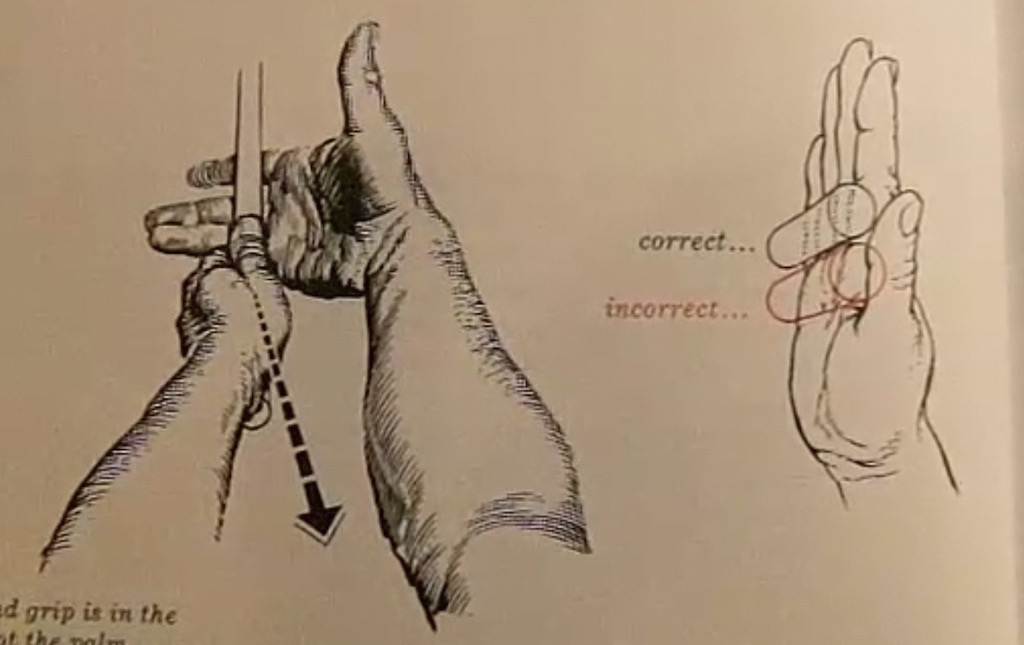
My golf learning began with this simple fact – if you don’t have a fundamentally sound hold on the golf club, it is practically impossible for your body to execute a fundamentally sound golf swing. I’m still a big believer that the golf swing is much easier to execute if you begin with the proper hold on the club.
As you might imagine, I come into contact with hundreds of golfers of all skill levels. And it is very rare to see a good player with a bad hold on the golf club. There are some exceptions, for sure, but they are very few and very far between, and they typically have beat so many balls with their poor grip that they’ve found a way to work around it.
The reality of biophysics is that the body moves only in certain ways – and the particulars of the way you hold the golf club can totally prevent a sound swing motion that allows the club to release properly through the impact zone. The wonderful thing is that anyone can learn how to put a fundamentally sound hold on the golf club, and you can practice it anywhere your hands are not otherwise engaged, like watching TV or just sitting and relaxing.
Whether you prefer an overlap, interlock or full-finger (not baseball!) grip on the club, the same fundamentals apply. Here are the major grip faults I see most often, in the order of the frequency:
Mis-aligned hands
By this I mean that the palms of the two hands are not parallel to each other. Too many golfers have a weak left hand and strong right, or vice versa. The easiest way to learn how to hold the club with your palms aligned properly is to grip a plain wooden ruler or yardstick. It forces the hands to align properly and shows you how that feels. If you grip and re-grip a yardstick several times, then grip a club, you’ll see that the learning curve is almost immediate.
The position of the grip in the upper/left hand
I also observe many golfers who have the butt of the grip too far into the heel pad of the upper hand (the left hand for right-handed players). It’s amazing how much easier it is to release the club through the ball if even 1/4-1/2″ of the butt is beyond the left heel pad. Try this yourself to see what I mean. Swing the club freely with just your left hand and notice the difference in its release from when you hold it at the end of the grip, versus gripping down even a half inch.
To help you really understand how this works, go to the range and hit shots with your five-iron gripped down a full inch to make the club the same length as your seven-iron. You will probably see an amazing shot shape difference, and likely not see as much distance loss as you would expect.
Too much lower (right) hand on the club
It seems like almost all golfers of 8-10 handicap or higher have the club too far into the palm of the lower hand, because that feels “good” if you are trying to control the path of the clubhead to the ball. But the golf swing is not an effort to hit at the ball – it is a swing of the club. The proper hold on the club has the grip underneath the pad at the base of the fingers. This will likely feel “weak” to you — like you cannot control the club like that. EXACTLY. You should not be trying to control the club with your lower/master hand.
Gripping too tightly
Nearly all golfers hold the club too tightly, which tenses up the forearms and prevents a proper release of the club through impact. In order for the club to move back and through properly, you must feel that the club is controlled by the last three fingers of the upper hand, and the middle two fingers of the lower hand. If you engage your thumbs and forefingers in “holding” the club, the result will almost always be a grip that is too tight. Try this for yourself. Hold the club in your upper hand only, and squeeze firmly with just the last three fingers, with the forefinger and thumb off the club entirely. You have good control, but your forearms are not tense. Then begin to squeeze down with your thumb and forefinger and observe the tensing of the entire forearm. This is the way we are made, so the key to preventing tenseness in the arms is to hold the club very lightly with the “pinchers” — the thumbs and forefingers.
So, those are what I believe are the four fundamentals of a good grip. Anyone can learn them in their home or office very quickly. There is no easier way to improve your ball striking consistency and add distance than giving more attention to the way you hold the golf club.
More from the Wedge Guy
- The Wedge Guy: Golf mastery begins with your wedge game
- The Wedge Guy: Why golf is 20 times harder than brain surgery
- The Wedge Guy: Musings on the golf ball rollback
- LIKE87
- LEGIT13
- WOW6
- LOL1
- IDHT0
- FLOP4
- OB1
- SHANK8
Instruction
Clement: Stop ripping off your swing with this drill!

Not the dreaded headcover under the armpit drill! As if your body is defective and can’t function by itself! Have you seen how incredible the human machine is with all the incredible feats of agility all kinds of athletes are accomplishing? You think your body is so defective (the good Lord is laughing his head off at you) that it needs a headcover tucked under the armpit so you can swing like T-Rex?
- LIKE0
- LEGIT2
- WOW2
- LOL0
- IDHT0
- FLOP0
- OB0
- SHANK2
-
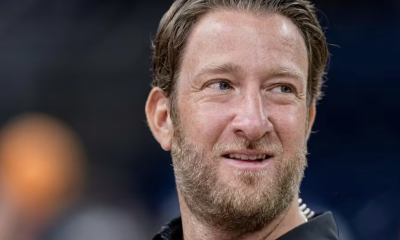
 19th Hole2 weeks ago
19th Hole2 weeks agoDave Portnoy places monstrous outright bet for the 2024 Masters
-
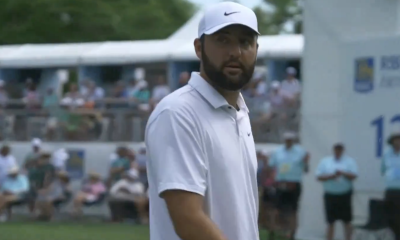
 19th Hole4 days ago
19th Hole4 days agoJustin Thomas on the equipment choice of Scottie Scheffler that he thinks is ‘weird’
-
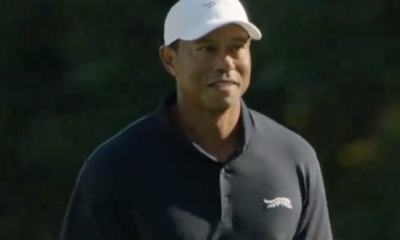
 19th Hole2 weeks ago
19th Hole2 weeks agoTiger Woods arrives at 2024 Masters equipped with a putter that may surprise you
-

 19th Hole4 days ago
19th Hole4 days ago‘Absolutely crazy’ – Major champ lays into Patrick Cantlay over his decision on final hole of RBC Heritage
-
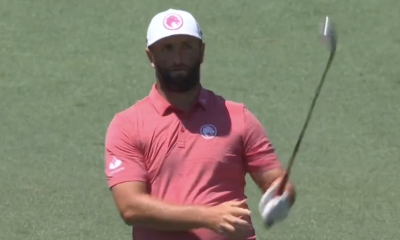
 19th Hole2 weeks ago
19th Hole2 weeks agoTwo star names reportedly blanked Jon Rahm all week at the Masters
-
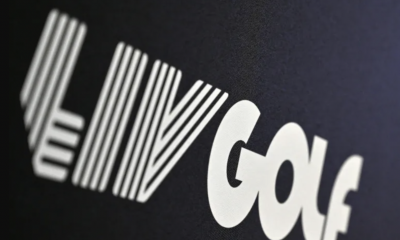
 19th Hole1 week ago
19th Hole1 week agoReport: LIV Golf identifies latest star name they hope to sign to breakaway tour
-
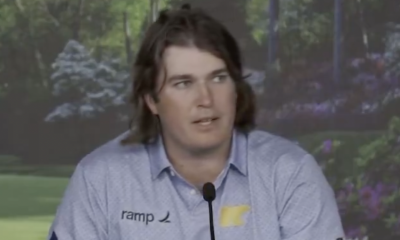
 19th Hole2 weeks ago
19th Hole2 weeks agoNeal Shipley presser ends in awkward fashion after reporter claims Tiger handed him note on 8th fairway
-

 19th Hole1 week ago
19th Hole1 week agoBrandel Chamblee has ‘no doubt’ who started the McIlroy/LIV rumor and why
















Pingback: The Great Features Of The Golf Course All Over The World – My Blog
Jose
Feb 13, 2015 at 2:14 pm
It is not that failure is crucial, it is that failure is part of the process of learning and innovation and not to self stigmatize failure.
The majority of successful Silicon Valley Startups’ plan A’s were failures. The gold was in applying what you learn from executing plan A and apply it to plan B.
http://youtu.be/De6h0_qGulg
Jose
Feb 13, 2015 at 1:03 pm
or ADHD Golfers who are experimental learners by nature there is no stress hitting the hard shots. Anxiety comes into play when worried about the consequences of results. Mindfulness exercises can help the brain focus on the moment while ignoring broken windows, concussed alligators …etc
Alex
May 24, 2015 at 3:25 pm
So true. I have ADHD myself and I relish the most difficult shots on the course. I always get excited, develop a gameplan, and execute with much better commitment than something like a 150 yard 7 iron from the middle of the fairway. I’m so overwhelmingly a feel player because of it, that any shot based on making a stock swing feels like too much of a blank canvas for me. I’d much rather be 230 yards away from the rough having to low-slice a 3 wood around a tree. Why? It’s fun. I just wish I could take some of the skill I’ve developed with these shots and apply it to the shots that I should take care of no problem.
CK
Jan 31, 2015 at 3:05 pm
Great article Mr. Clark! How would you give advice to someone who can shoot level par all day long, but when he gets to a tournament he is lucky to break 80? Thank you again!
Al
Jan 29, 2015 at 12:58 pm
My failure rate approaches 100%. I knew in my heart I should be scratch by now.
mj
Jan 28, 2015 at 5:09 pm
Dennis How about the pressure of playing in a tournament when you might not be ready. Like the first one of the year that you play and playing each shot as you would to try and improve your skills not just bunt it around laying up on par 4s no lob shots landing the ball as close to the fringe and let it roll bs Practice after the round the shots u cant hit because that is when your still focused at least I am I like the saying and the percentages change with some that 90 percent of the people dont care what you shoot and the other 10 wish you shot higher To score bette you have to challenge your tough shots or even the straight in 5 footers I hope this makes sense
Dennis Clark
Jan 28, 2015 at 7:55 pm
sorta…punctuation would help me read it better. thx
Brad Ingarfield
Jan 27, 2015 at 6:05 pm
I have often wondered if to be a really good player you should use unforgiving blade irons. This research might support that view.
Rich
Jan 27, 2015 at 7:50 pm
I’ve often thought the same thing but have realised, like with everything else in this game, it’s each to their own. If it helps you play better having the challenge to pure a blade every time, go for it. I’ve gone with a balance with my irons and it’s good have that bit of forgiveness on those days when I’m not quite striping it or when I make a bad swing.
Mike
Jan 27, 2015 at 3:48 pm
“This means that we derive more value from practice when we fail 30-to-40 percent of the time than when we’re successful a majority of the time. ”
Ummm isn’t this the definition of succeeding the majority of the time?
Dennis Clark
Jan 27, 2015 at 4:02 pm
Just reporting the scientist in the field who researches this stuff for his life’s work…
JP
Jan 27, 2015 at 8:08 am
Great article Dennis. Luke Donald – who is shown escaping from the sand in the picture above the article and has one of the best short games on tour – often talks about making his practice more difficult, dropping balls on to the ground or in to sand and treading on them to create challenging lies. He knows he’s unlikely to face those kind of shots on the manicured courses he plays, but having practiced for the worst, he then views most escape shots as fairly routine. It’s a great mindset.
Dennis Clark
Jan 27, 2015 at 4:04 pm
JP, so true! We set ourselves up to fail by improving lies on the range constantly
Chris
Jan 27, 2015 at 3:57 am
Here’s a longer format audio interview with Dr. Guadagnoli where he discusses learning, effective practice and some other aspects of playing great golf. http://birdiebank.com/020-dr-mark-guadagnoli-the-science-behind-how-elite-athletes-learn-faster-perform-better-and-triumph-in-competition/
Dennis Clark
Jan 27, 2015 at 4:03 pm
Thx Chris
Rich
Jan 26, 2015 at 11:17 pm
More often than not, people have a hard time translating good practice into good play on the golf course. I don’t know if failing 30-40% of the time would give me a lot of confidence to play well but I’ve found if you can disconnect the “fear of failure” when actually playing, then you’ll play more like you practice. Sure, don’t just go out and hit easy shot after easy shot but creating positive images is just as important when it comes to those pressure shots. Not giving a sh&t helps too.
Jose
Feb 13, 2015 at 1:20 pm
It is not failure, it is simply a process of learning.
Shawn Clement often speaks of practicing with Goldilocks.
For example you are trying to hit a 9 iron to the 100 yard faux green at the range when it is your 145 yard club. Hit the first shot just short. Then hit the second shot just over the back of the green. With the thirds shot predict at the flag. The third time through this sequence you will be lights out. This is how the neocortex learns.
http://youtu.be/6ufPpZDmPKA
RG
Jan 26, 2015 at 8:20 pm
Great article Dennis. Along those lines often when I play a practice round I will eliminate certain clubs from my bag. No 7i forces me to hit a knockdown 6i, and so on. Challenging the mind and engaging the imagination is just as if not more important than physical technique.
Dennis Clark
Jan 26, 2015 at 8:56 pm
Exactly! Thx
rgb
Jan 26, 2015 at 7:51 pm
Oh my. This will never do. Imagine today’s urchins — having been raised coddled in the arms of early childhood education and the concept that one never fails and participation is more important than success or winning — being told that FAILURE is necessary to develop. A concept they’ve never experienced because to mention FAILURE means someone was a winner. Oh, I can hear the wails now.
Alex
Jan 26, 2015 at 3:18 pm
I’ve played golf since I was a kid, and the items you list. are what we used to do all day long at the course. These days I do pretty much the same in short 30 ball sessions not to get bored. Sometimes I feel sort of embarassed for practicing ‘like a child’, but now I have some research backing me up LOL.
Dennis Clark
Jan 26, 2015 at 8:56 pm
yes; Piano, dance, golf, whatever…